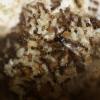- Formiculture.com
- Forums
- Gallery
- Members
- Member Map
- Chat

Why not have ants on the outside of tubes?
Started By
Works4TheGood
, Aug 11 2015 6:39 PM
18 replies to this topic
#1
 Offline
-
Posted August 11 2015 - 6:39 PM
Offline
-
Posted August 11 2015 - 6:39 PM
I thought I remembered seeing a documentary long ago where someone had an ant colony, and the ants walked from one container to the next by walking on the outside of the "tubes" rather than the inside. I suppose that if the ants fell off that they could then escape, but aren't ants designed not to fall from sufficiently rough surfaces? Clear, flexible, PVC tubing might be too slippery, but with some sand paper, you might be able to rough it up sufficiently to give the ants a solid foothold. Or maybe even use a different media entirely instead. Does anyone else do this? I only ever hear of ands inside of the tubes.
This is very appealing to me because I have 2 empty thirty gallon aquariums that I could use, but I'm not going to try to put holes in the glass, and I want my formicarium to be separate.
-Dan
This is very appealing to me because I have 2 empty thirty gallon aquariums that I could use, but I'm not going to try to put holes in the glass, and I want my formicarium to be separate.
-Dan
~Dan
#2
 Offline
-
Posted August 11 2015 - 7:15 PM
Offline
-
Posted August 11 2015 - 7:15 PM
The only way I think you do it without ants escaping is if you do like a Arc from one acquarium to the other, with a larger arch slanted inward and coated with fluon underneath to catch them and slide them back to one of the acquariums. Sounds crazy.
#3
 Offline
-
Posted August 11 2015 - 8:40 PM
Offline
-
Posted August 11 2015 - 8:40 PM
I think I've seen twine used. No matter how rough the surface is though, there will eventually be some ants that will fall.
- LC3 likes this
#4
 Offline
-
Posted August 11 2015 - 11:51 PM
Offline
-
Posted August 11 2015 - 11:51 PM
You should do it over someone's bed then when they are sleeping ants will fall all over them ![]()
#5
 Offline
-
Posted August 12 2015 - 4:25 AM
Offline
-
Posted August 12 2015 - 4:25 AM
Ants: Nature's Secret PowerI thought I remembered seeing a documentary long ago where someone had an ant colony, and the ants walked from one container to the next by walking on the outside of the "tubes" rather than the inside...
That's where I saw a setup similar to what you describe.
The closest I've seen a hobbyist do is an open outworld located inside a small plastic child's pool, ensuring a significant moat exists at all times. I still think travel from nest to this outworld was done inside tubing, however.
Edited by spinyeti, August 12 2015 - 5:07 AM.
- AntsTexas, Works4TheGood and Tyrone like this
#6
 Offline
-
Posted August 12 2015 - 8:51 AM
Offline
-
Posted August 12 2015 - 8:51 AM
Cool!
#7
 Offline
-
Posted August 12 2015 - 9:12 AM
Offline
-
Posted August 12 2015 - 9:12 AM
I have seen something like you described on a Dutch ant keeping forum. they made a little wooden frame thing that had two "legs" one went from one foraging area to another. Then the ants climbed it to get to the other foraging area [which I believe both had nests attached] if I can find It I will share it with you.
Even better I found a video demonstrating it:
video:
Edited by dermy, August 12 2015 - 9:14 AM.
- Works4TheGood likes this
#8
 Offline
-
Posted August 12 2015 - 9:59 AM
Offline
-
Posted August 12 2015 - 9:59 AM
Dermy,
I really would have liked to see the rest of the setup. I wonder if they take precautions with ants falling off. Still very cool though!
~Dan
#9
 Offline
-
Posted August 12 2015 - 10:23 AM
Offline
-
Posted August 12 2015 - 10:23 AM
Here is the journal on a Dutch forum you can see a picture of the whole "stand thing"
https://translate.go...dzQ2aMXyjF5N7hg
It is about 3/4 the way down.
Please tell me if the link doesn't work or something.
#10
 Offline
-
Posted August 12 2015 - 10:30 AM
Offline
-
Posted August 12 2015 - 10:30 AM
It would be cool if you had a massive colony of Solenopis, and you connected the outworld to the nest with aerogel tubes. Under the right lighting, the ants would look like they are flying. Pic from https://s-media-cach...f3c1dfbe0f6.jpg.

- AntsTexas and Works4TheGood like this
Species I keep:
1 Lasius cf. Neoniger 30 workers
1 Camponotus sp. 15 workers
20 Tetramorium SpE 30 workers
1 T. Sessile 200 workers
#11
 Offline
-
Posted August 12 2015 - 12:41 PM
Offline
-
Posted August 12 2015 - 12:41 PM
That stuff sounds cool. Also sounds like it would be outrageously expensive.
Kind of reminds me of Mercury when cooled to the extreme as a superconductor. It can have zero electrical resistance. Not practical but very cool for certain applications.
Kind of reminds me of Mercury when cooled to the extreme as a superconductor. It can have zero electrical resistance. Not practical but very cool for certain applications.
#12
 Offline
-
Posted August 12 2015 - 1:36 PM
Offline
-
Posted August 12 2015 - 1:36 PM
Aerogel is rather expensive. A ~1.5 cm x 1.0 cm block costs $40. Tubing seems to cost more.
Edited by William. T, August 12 2015 - 2:58 PM.
Species I keep:
1 Lasius cf. Neoniger 30 workers
1 Camponotus sp. 15 workers
20 Tetramorium SpE 30 workers
1 T. Sessile 200 workers
#13
 Offline
-
Posted August 16 2015 - 12:08 AM
Offline
-
Posted August 16 2015 - 12:08 AM
Here is a Atta sexdens Colony with that cool "bridge setup"
#14
 Offline
-
Posted August 16 2015 - 6:10 AM
Offline
-
Posted August 16 2015 - 6:10 AM
Woah that's crazy looking! But the question arises, what happens if an ant falls off some of those bridges? They would end up out of the colony and escape yes?
This message brought to you by the Committee for the Education of Folks who Describe Arthropod Taxa as 'Not Interesting' (CEFDATNI)
#15
 Offline
-
Posted August 16 2015 - 8:24 AM
Offline
-
Posted August 16 2015 - 8:24 AM
Woah that's crazy looking! But the question arises, what happens if an ant falls off some of those bridges? They would end up out of the colony and escape yes?
They would escape but 1 ant is not that big of a deal, not to mention these are Atta they walk all over branches and stuff in the wild.
#16
 Offline
-
Posted August 16 2015 - 4:53 PM
Offline
-
Posted August 16 2015 - 4:53 PM
Now that's what I'm talking about!
And like LC3 said, I think you'd have the best results with species that enjoy climbing trees. Being from State College, PA, I think that our Camponotus pennsylvanicus would do just fine with air bridges like that. Conversely, I'd suspect that Lasius might not do as well - and you'd find them all over your floor. If you think about it, if an ant falls out of a big tree, its odds of making it back to the nest are greatly reduced, and so I would not expect species that climb trees to be good at staying in them. But that's just a theory. I think someone else should test it out! ![]()
~Dan
#17
 Offline
-
Posted August 16 2015 - 4:55 PM
Offline
-
Posted August 16 2015 - 4:55 PM
Having large workers, like Campontus, also helps.
Species I keep:
1 Lasius cf. Neoniger 30 workers
1 Camponotus sp. 15 workers
20 Tetramorium SpE 30 workers
1 T. Sessile 200 workers
#18
 Offline
-
Posted August 16 2015 - 6:08 PM
Offline
-
Posted August 16 2015 - 6:08 PM
If you think about it, if an ant falls out of a big tree, its odds of making it back to the nest are greatly reduced, and so I would not expect species that climb trees to be good at staying in them. But that's just a theory.
Not really related to the topic of using bridges but giant glider ants (Cephalotes atratus) can glide back to it's tree's trunk and find it's way home if it ever got dislodged; they use their weird flat shaped heads and feet to do so.
#19
 Offline
-
Posted August 17 2015 - 11:18 AM
Offline
-
Posted August 17 2015 - 11:18 AM
If you think about it, if an ant falls out of a big tree, its odds of making it back to the nest are greatly reduced, and so I would not expect species that climb trees to be good at staying in them. But that's just a theory.
Not really related to the topic of using bridges but giant glider ants (Cephalotes atratus) can glide back to it's tree's trunk and find it's way home if it ever got dislodged; they use their weird flat shaped heads and feet to do so.
Whoa! Bizarre! ![]()
~Dan
0 user(s) are reading this topic
0 members, 0 guests, 0 anonymous users



















